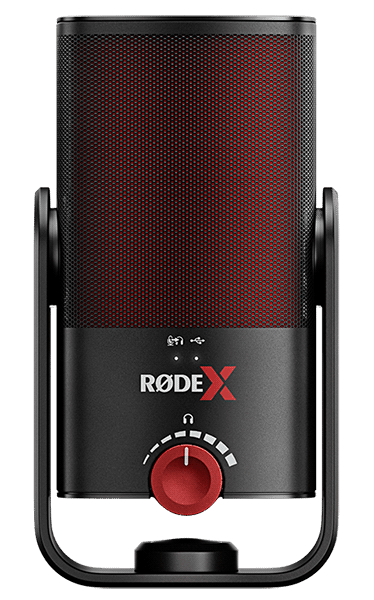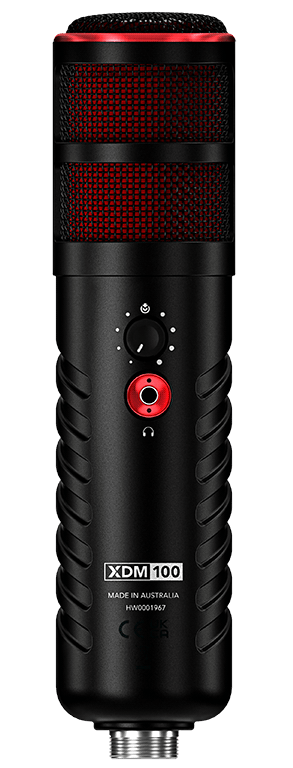
Review: RØDE X: XDM-100, XCM-50 & Unify
Røde launches a sub-brand with three new products aimed at the gaming and streaming market.
Gaming and streaming pose a unique audio challenge which most off-the-shelf audio interfaces or USB mics don’t really solve.
Namely, it’s the requirement to fling audio to, from and between individual applications within your computer.
Audio interfaces bridge the gap between your computer and the real world. With gaming and streaming, it’s less about getting audio in and out of a computer, and more about moving audio around within it. This seems like a simple problem to fix but only when you try to create custom audio routing configurations within a software environment do you realise it’s anything but straightforward. Some traditional audio interfaces partially address this by adding a pair of Loopback channels to its virtual mixer but this can be insufficient for a more thorough streaming or gaming setup.
Rode X directly addresses these requirements. A sub-brand of Rode Microphones, the new moniker marks a specific focus on the audio needs of gamers and live streamers.
From a marketing point of view, Rode differentiates its new sub-brand with a whole lot of red. The packaging, the mics, the software – red accents punctuate anything within the Rode X ecosystem, giving the product family a mark of distinction from the stable of established Rode products. It’s a new thing, and is meant to be perceived as such.
With the launch of Rode X comes three new products. Let’s take a look at each.

XCM-50 USB MIC
The first of two USB mics in the Rode X introduction, the XCM-50 instantly resembles the Rode NT-USB Mini mic but with the signature Rode X splash of red behind the grille and on the headphone output knob. It ships with a sturdy tripod stand which screws into the underside of the XCM-50 on a manoeuvrable ball and socket attachment. Connection to a computer is via USB-C and a 3.5mm output passes audio to your headphones or speakers. A long USB-C cable is included along with a 3.5mm headphone extender. Like the NT-USB Mini, the XCM-50 microphone has a condenser capsule with a wide cardioid pickup. Speech reproduction is natural and extended with negligible room noise even a foot or so away.

XDM-100 USB MIC
Taking its design cues from the Rode Procaster with the distinctive ribbing pattern, the XDM-100 is a cardioid dynamic USB microphone also launched under the Rode X umbrella. Dashes of metallic red around the headphone output and grille contrast nicely with the matte black finish and a blue status LED lights up when the XDM-100 is paired with your computer via USB-C. It’s purely a USB mic – no XLR output – and it ships with a quality elastic shockmount and slide-on pop filter — the latter of which hugely improves the mic’s ability to handle plosives albeit with slightly deader trebles. Sonically, the XDM-100 produces a broadcast-able rich vocal tone with warm lows and excellent isolation.
NEED TO KNOW
RØDE X: XDM-100, XCM-50 & UNIFY

UNIFY SOFTWARE PLATFORM
At the heart of Rode X is a new software platform called Unify. It’s essentially a virtual mixer, much like the type you’d get with a recording interface to balance input levels and create headphone mixes, only Unify focuses more heavily on managing software channels than physical I/O.
In a typical gaming or streaming environment you’ll have several applications running at once; e.g. the game itself, a communication app like Discord, a browser, a music application like Spotify or iTunes, streaming software such as OBS or Twitch, maybe a videocall app like Zoom/Teams/Skype, then if you’re a musician, maybe it’s a DAW like Pro Tools or Ableton Live, the list goes on. The point is, many of these applications produce and/or accept audio feeds. In a live streaming scenario, you may want the mix you send to your audience to be a combination of any or all of these independent feeds of audio from the software. If you’re a gamer who’s simultaneously streaming your gameplay while conversing with other gamers, the need for audio routing flexibility only increases.
Unify comfortably handles such contexts and more. Its mixer provides control over up to four USB mics or audio devices (such as the XDM-100 and XCM-50) and up to six virtual audio sources (from your software applications). Custom submixes consisting of all aforementioned sources can be created and fed to headphones, chat and livestream outputs independently. What’s more, Unify offers Aphex digital signal processing on the four microphone channels as well as full multi-track recording so you can refine your mix later if you choose.
Aesthetically, Unify borrows many elements of its GUI from the Rodecaster Pro II. It’s a neat layout with clear colour-coded labels on all functions. Unify ships free with any purchase of a Rode X microphone and it’s also available standalone for A$7.99/mo or A$69.99/yr.
X MARKS THE SPOT
Rode X is best thought of as the audio distribution centre at the heart of your gaming or streaming setup. Never has it been this easy to transport and manipulate channels of audio between software applications, and the use cases for this are broad. What also stands out is the ability to process multiple channels of USB mics in Unify to create a more polished sound. Then, as a further value add, multi-track recording is a fantastic addition especially for music streamers who’d love to mix their live virtual performances after the fact. The Australian-made XCM-50 and XDM-100 mics meet the standard of quality we expect from Rode, and if these first three products are any indication of what’s yet to be revealed from the Rode X brand, then gamers and streamers have plenty to get excited about.
N.B. Unify is only compatible with Windows as of the time of launch. Rode assures us, there will be a macOS version of Unify, but it will likely be quite stripped back due to limitations/compatibility with Apple.

























RESPONSES